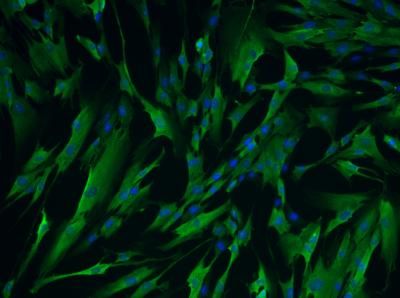From attograms to Daltons: Cornell NEMS device detects the mass of a single DNA molecule
Advertisement
Researchers at Cornell University built a device so sensitive, they have detected a single DNA molecule, weighing in at 995,000 Daltons -- a shade more than 1 attogram -- and can even count the number of DNA molecules attached to a single receptor by noting the difference in mass. The devices, which fall in the class of nanoelectromechanical systems (NEMS), could be made even more sensitive through increased miniaturization, the researchers say. The technology, they suggest, can be combined with microfluidics to perform genetic analysis of very small samples of DNA, even the amount present in a single cell. Current techniques for genetic analysis require small samples of DNA to be replicated many times through a process called PCR amplification.
While DNA molecules are fairly large, as molecules go, they are still a step smaller than most viruses, which consist of a DNA core surrounded by a protein coat. The Cornell researchers believe their technology could be used to identify even smaller organic molecules, including proteins, and could have widespread applications in medical and forensic diagnosis.
The principle underlying the mass-detection devices is that the frequency at which a solid object vibrates varies with its mass. To apply this at the nanoscale, the researchers used the Cornell Nanoscale Facility to create arrays of tiny cantilever oscillators 3 to 5 microns long and 90 nanometers thick on silicon chips. At the end of each cantilever they deposited a tiny dot of gold 40 nanometers in diameter. A solution containing a strand of DNA consisting of 1,578 base pairs was washed over an array of cantilevers. For experimental purposes, the DNA was modified by the addition of a thiol, which contains sulfur atoms that tend to bind to gold. As a result, some of the DNA attached to the gold dots.
When excited by energy from a laser, these cantilevers oscillate at frequencies of around 11 to 12 Megahertz (MHz). The frequency is measured by shining another laser on the oscillator and noting interference patterns in the beam caused by the reflected light. In the reported experiments, the change in mass of 1 attogram was enough to shift the frequency of vibration by 50 Hz or more, depending on the size of the oscillator. With the smallest and most sensitive device, the shift was 194 Hz. This allowed the researchers not only to detect the binding of DNA molecules, but also to count the number of molecules attached to a single receptor by the total frequency shift. By diluting the sample solution, they were able to identify cantilevers to which single DNA molecules had attached.
Original publications: "Optical excitation of nanoelectromechanical oscillators"; Applied Physics Letters 2005, 86, 193114.
"Enumeration of DNA molecules bound to a nanomechanical oscillator."; Nano Letters 2005.























































